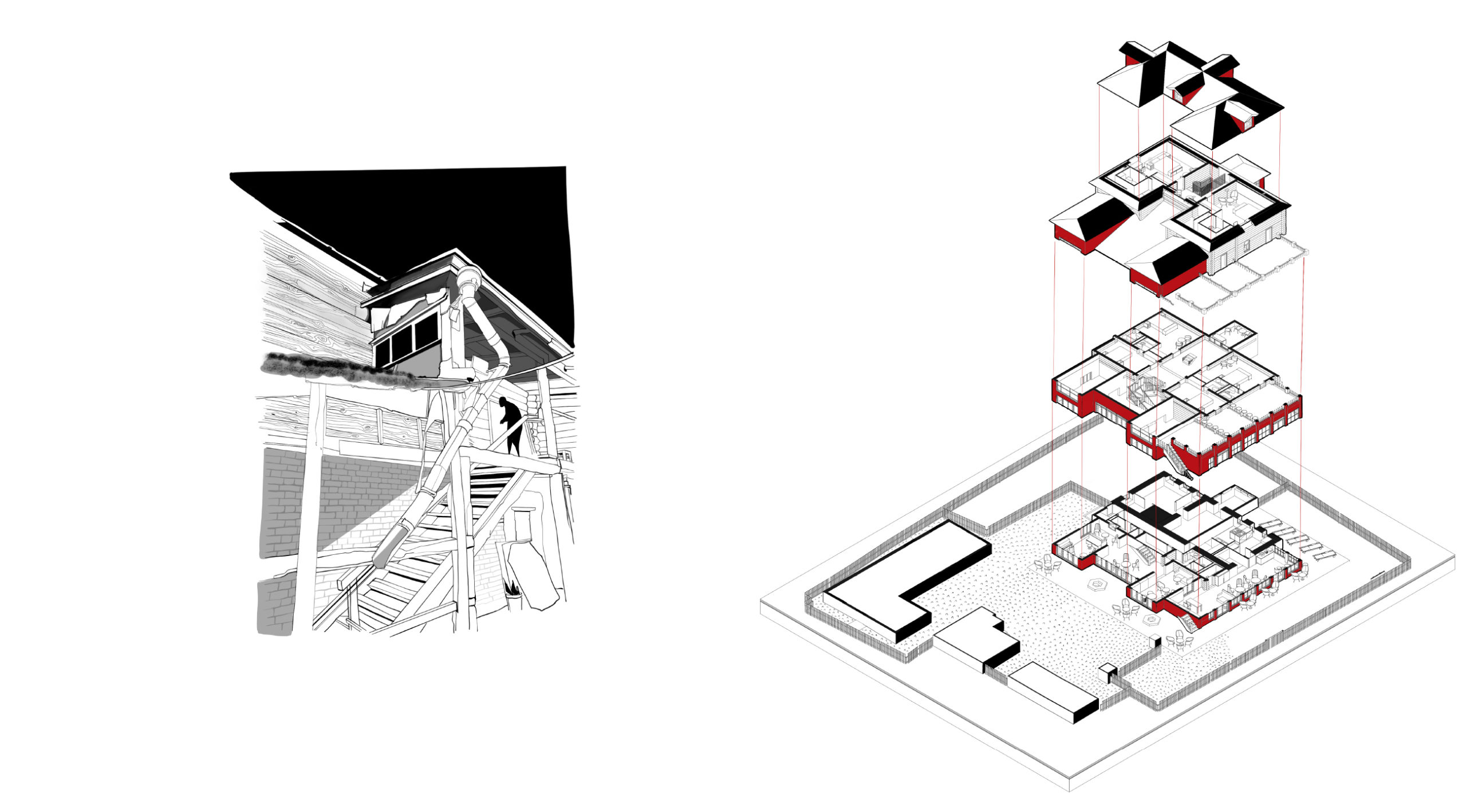Project “House of the second avant-garde. Nemukhin’s Workshop” is a museum, exhibition space and hotel under the same roof of a historic house where Russian artist Vladimir Nemukhin lived and worked throughout his life. The space will house a collection of works by artists of the period of the Second Russian avant-garde, temporary exhibitions and an educational program are planned. Visitors will be able not only to touch art, but also to stay in one of the rooms, enjoy the surrounding nature and immerse themselves in the atmosphere in which Vladimir Nemukhin and his associates, other nonconformist artists, worked.
“Priluki stands by the sand dunes on the left bank of the Oka, in the very place where the Lopasnya River flows into it. When you go to the dunes from the east
side, because of the turn, a beautiful panorama of the steep bank of the Oka opens up. In my childhood, Priluki was a cozy village located between Kashira and Serpukhov, whose communication with the outside world was limited to the Luch boat, which ran between these cities twice a day. Our family house in the village, with a strong stone basement and a chopped log top, has been standing for more than 150 years … Pryluki has become a place of pilgrimage for many artists who came here on my advice. Without exaggeration, I can say that many artists from the underground of the first draft visited here: Oscar Rabin with his family, Lev Krapivnitsky and Slava Kalinin, Nikolai Vechtomov with his family and Dmitry Plavinsky. Boris Sveshnikov also worked there.”
Today, house 21 in the village of Priluki is like a frozen monument to Vladimir Nemukhin.
After analyzing a number of historical photographs, the idea of reviving the creative atmosphere through architecture suggests itself.
The idea of organizing a cultural environment around, yesterday, everyday things.
Floor plans for the reconstruction of the house:

In the concept itself, we paid attention to all the details that the house experienced, and took them into account in planning the space and the entire a whole site.
Periodization of photographs starts from the 1960s and ends in 2021 (at the time of design)

We have kept all the required parts that were erected by Nemukhin himself, and completed the overall frame – thereby giving integrity to the entire complex. A terrace was organized along the perimeter, where passers-by who do not stay overnight in the house can relax.
From almost every space on the 1st floor there is direct access to the street – this contributes to large-scale exhibitions, master classes and events, especially in the warm season.
All facades were also reconstructed in the likeness of the original building. Only a closed terrace has been added, which plays the role of a buffer between the street and the exhibition-living room.
The concept of interiors is focused on preserving all the best that has developed historically in space.
Selected textures carefully complement the interior, and antique furniture creates a cozy atmosphere.
The shades of the interior are pastel – they emphasize the significance of the place and bring to the fore the artist’s work – accents.
Living room – gallery
The living room is one of the key spaces that unites all visitors to the museum and the hotel. The primary task of the interior is to provide maximum coziness, a sense of comfort. Also, an additional function of the living room is an art gallery.
Calm pastel shades, complemented by wooden textures, light ceiling moldings and bright decor.
Library – cabinet
One of the most atmospheric rooms, which should immerse you in the atmosphere of the book heroes of the classical
Russian literature. Wood, textured glass, delicate furniture, plenty of light and light fabrics.
Bedroom – quiet thoughtfulness
The bedroom is a chamber space that can immerse you in the era of the 2nd wave of avant-garde. The concept of the interiors of the rooms is formed around the atmosphere of the works of the artists of the Lizanov school.
Especially for the project, a product design was also developed, where its main elements and recognition are determined. In the interior, it is allowed to use a rhombus symbol without a text inscription for placement on various media inside the museum building that do not imply an external advertising or representative function: guest cards, wardrobe numbers, door numbers, etc.

